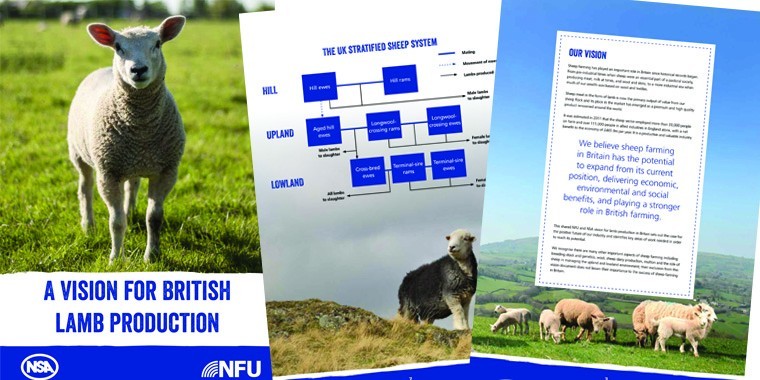The report highlights the strengths and weaknesses of the sector as it stands and identifies the opportunities ahead and barriers that must be tackled in order to exploit them. It will be used to frame and guide NFU and NSA activities and inform and convince policy and decision makers of the potential the sheep sector offers and what they can do to clear a pathway for its continued success.
Phil Stocker, NSA Chief Executive, says: “We are proud of the report, and particularly the fact the two main organisations representing sheep producers have come together in this way. For the first time we have pooled our resources to produce a clear, consistent message about where the industry should be going. The report provides a framework to keep us focused on our main goal, which is to help sheep producers make the most of opportunities that will strengthen their businesses in times ahead.”
The report emphasises the need for the industry to react to market signals, to maintain and expand export options for producers as well as building on the current domestic market for sheep meat. With the growth of sheep meat exports predicted to continue, and annual per capita consumption running at just 1.7kgs even a slight increase would have a significant impact on demand.
Charles Sercombe, NFU livestock board chairman, says: “The sheep industry in this country has a bright future and is well placed to address the challenges of global markets and to take the opportunities that are presenting themselves. The vision for lamb production, launched at the Sheep Even,t sets out this positive vision and identifies areas we need to tackle to achieve it.
“A successful industry is one with a ruthless focus on supplying the market with the product it needs as efficiently as possible. This will involve long term partnerships across the supply chain to identify and clearly communicate customer requirements. It will need appropriate marketing of our product on its inherent values, including great eating quality, high welfare and sustainable environmental management. Finally, Government must actively tackle legislative barriers which reduce competiveness and our ability to efficiently supply markets across the world.”
The next generation of sheep farmers is vital for any vision of the future and the report acknowledges this, as well as ensuring that both existing producers and new entrant adopt best practice measures for health, welfare, nutrition, genetics and all other aspects of production.
Mr Stocker says: “The potential is clear to see, and to make the most of this we need to do all we can to keep markets open and growing, in particular avoiding disease situations that potentially affect trade. We also need to maintain a focus on efficiency and costs and to do all we can to build on the very positive image that surrounds UK lamb. That ‘brand’ is built on good welfare conditions, a green and pleasant countryside, diversity of breeds and people, and tradition. Sheep farmers know this but also understand the high level of science and technology that underpin the sector. The long term future will be dependent on sheep farming attracting high calibre people to get involved and it’s easy to find a positive attraction whatever angle someone might be coming from.”
Read the report online at www.nationalsheep.org.uk/hot-topics or www.nfuonline.com/sectors/livestock




